





























© Wikimedia/Creative Commons
0 / 30 Fotos
Barakish - Pictured are the ruins of the historic town of Barakish. The director-general of UNESCO, Irina Bokova, expressed outrage after the destruction of the pre-Islamic walled city, known to the Greeks and Romans as Athlula, or Athrula. (Photo: Wikimedia/CC BY 2.0)
© Wikimedia/Creative Commons
1 / 30 Fotos
Al Qahira Castle - The 10th-century Al Qahira Castle, located on the slopes of Mount Sabr in Taiz, was severely damaged during a 2015 airstrike. Yemen's cultural capital has endured conflict and siege since the 2011 Yemeni uprising.
© Shutterstock
2 / 30 Fotos
Khailat Bugshan
- The remarkable Khailah Palace Hotel at Wadi Do'an in the Khailat Bugshan region of Yemen was once an obligatory stop for adventure tourists. The civil conflict, plus the threat still posed by Al-Qaeda, has seen the tourism industry in Yemen decimated. (Photo: Flickr/CC BY-SA 2.0)
© Flickr/Creative Commons
3 / 30 Fotos
Queen Arwa Mosque - Built between 1056 and 1111 by order of Queen Arwa al-Sulayhi, this is one of the oldest Yemeni mosques in existence. It's located in Jibla, a town included on the UNESCO World Heritage Tentative List. (Photo: Wikimedia/CC BY-SA 3.0)
© Wikimedia/Creative Commons
4 / 30 Fotos
Old City of Sa’adah - Another ancient town languishing on UNESCO's tentative list, Sa’adah saw several of its historic buildings destroyed after a protracted battle here in 2011. (Photo: Wikimedia/CC BY-SA 3.0)
© Wikimedia/Creative Commons
5 / 30 Fotos
Temple of Awwam - Located near Ma'rib, once the capital of the ancient kingdom of Saba, the Awwam temple complex has been badly neglected since hostilities began. (Photo: Wikimedia/CC BY-SA 3.0)
© Wikimedia/Creative Commons
6 / 30 Fotos
Temple of Awwam - Attached to the temple is a cemetery dating back to the 7th century CE. Around 20,000 burials took place here. (Photo: Wikimedia/CC BY-SA 4.0)
© Wikimedia/Creative Commons
7 / 30 Fotos
Old Walled City of Shibam - Declared a UNESCO World Heritage Site in 1988, Shibam's mud-brick constructed high-rise buildings date back to the 16th century.
© iStock
8 / 30 Fotos
Old Walled City of Shibam - There are about 500 of these ancient skyscrapers, and Shibam remains one of the oldest and finest examples of urban planning based on the principle of vertical construction.
© Shutterstock
9 / 30 Fotos
Old Walled City of Shibam
- Known as the "Manhattan of the Desert," the old city has suffered some damage as a result of the war. UNESCO has now listed the destination as "cultural heritage at risk."
© Shutterstock
10 / 30 Fotos
Old City of Sana’a - Of worldwide cultural importance due to the remarkable survival of its medieval architecture, the Old City of Sana’a is deserving of its UNESCO World Heritage status. (Photo: Wikimedia/CC BY-SA 3.0)
© Wikimedia/Creative Commons
11 / 30 Fotos
Old City of Sana’a - Sana’a is one of the oldest continuously inhabited cities in the world.
© Shutterstock
12 / 30 Fotos
Old City of Sana’a - But its 2,500-year-old history is in danger of being rewritten in the cruelest way: Sana’a's 103 mosques and over 6,000 houses are under constant threat of Saudi-led air strikes. (Photo: Flickr/CC BY-SA 2.0)
© Flickr/Creative Commons
13 / 30 Fotos
Old City of Sana’a - In fact, a number of traditional tower-houses, constructed from rammed earth and distinguished by their decorated geometric facades, have already been destroyed. (Photo: Flickr/CC BY-NC-ND 2.0)
© Flickr/Creative Commons
14 / 30 Fotos
Old City of Sana’a - Look closely at the elaborate friezes and intricately carved frames and stained-glass windows. (Photo: Flickr/CC BY-SA 2.0)
© Flickr/Creative Commons
15 / 30 Fotos
Old City of Sana’a
- Fortunately, some of these tower-houses had been carefully recorded before the war, and restoration initiatives are already underway to rebuild those flattened by indiscriminate bombing.
© Shutterstock
16 / 30 Fotos
Al-Saleh Mosque - Sana’a's largest mosque was inaugurated in 2008. It was the scene of heavy fighting between Houthi and pro-Saleh forces in December 2017, during the so-called Battle of Sanaʽa.
© Shutterstock
17 / 30 Fotos
Al-Saleh Mosque - After the death of President Ali Abdullah Saleh, for whom the mosque was named, the Houthi-led authorities renamed the building "The People's Mosque."
© iStock
18 / 30 Fotos
Al-Saleh Mosque
- Sana’a's old city stands in marked contrast to the modern Al-Saleh Mosque, which cost US$60 million to build. What follows next is a list of landmarks that could seen be at great risk due to the conflict.
© Shutterstock
19 / 30 Fotos
Zabid - Yemen's third UNESCO World Heritage Site has been placed on the List of World Heritage in Danger not because of the consequences of conflict, but due to poor upkeep and conservation. (Photo: Wikimedia/CC BY-SA 2.0)
© Wikimedia/Creative Commons
20 / 30 Fotos
Zabid - Sited on Yemen's western coastal plain, the historic town is noted for its houses (constructed from burnt brick) and some 86 mosques, including the Al-Asha'ir Mosque, which dates back to 629 CE.
© iStock
21 / 30 Fotos
Dar al-Hajar Palace - Perched atop a stone pinnacle, this fantastical-looking building was constructed in the 1930s as a summer residence for an Islamic spiritual leader named Yahya Muhammad Hamiddin. (Photo: Wikimedia/CC BY-SA 3.0)
© Wikimedia/Creative Commons
22 / 30 Fotos
Al-Muhdhar Mosque - Located in the ancient city of Tarim is this historical Yemini mosque, crowned by a mud minaret measuring 48 m (151 ft), the highest in the country. Tarim itself is notable for a collection of palaces constructed between the 1870s and 1930s, which are among the most intricate and technologically sophisticated mud-brick structures in the world. (Photo: Wikimedia/CC BY-SA 3.0)
© Wikimedia/Creative Commons
23 / 30 Fotos
Jabal Bura - The forested area blanketing the mountains near the village of Jabal Bura is under consideration for inscription in UNESCO's list of sites that have "outstanding universal value."
© iStock
24 / 30 Fotos
Cisterns of Tawila - Carved out of the volcanic rocks of the Shamsan mountains, near Aden, about two millennia ago, this impressive system of tanks was used to store drinking water and prevent floods.
© Reuters
25 / 30 Fotos
Seiyun - Sitting in the middle of the tropical Hadramaut Valley is Seiyun, which is characterized by a collection of high-rise mud-brick towers.
© Shutterstock
26 / 30 Fotos
Sultan Al Kathiri Palace - Seiyun's outstanding landmark is its palace, also constructed from mud and brick. It's a relatively modern structure, dating back to the 1920s. (Photo: Flickr/CC BY-SA 2.0)
© Flickr/Creative Commons
27 / 30 Fotos
Shaharah - This remote mountain village sits at an altitude of 2,600 m (8, 530 ft) in the northwest of Yemen. (Photo: Wikimedia/CC BY-SA 3.0)
© Wikimedia/Creative Commons
28 / 30 Fotos
Shaharah
- The region is noted for its 17th-century limestone arch, built to connect Shaharah with a neighboring village across a deep gorge. (Photo: Wikimedia/CC BY-SA 3.0) See also: World Heritage Sites that could disappear anytime.
© Wikimedia/Creative Commons
29 / 30 Fotos
© Wikimedia/Creative Commons
0 / 30 Fotos
Barakish - Pictured are the ruins of the historic town of Barakish. The director-general of UNESCO, Irina Bokova, expressed outrage after the destruction of the pre-Islamic walled city, known to the Greeks and Romans as Athlula, or Athrula. (Photo: Wikimedia/CC BY 2.0)
© Wikimedia/Creative Commons
1 / 30 Fotos
Al Qahira Castle - The 10th-century Al Qahira Castle, located on the slopes of Mount Sabr in Taiz, was severely damaged during a 2015 airstrike. Yemen's cultural capital has endured conflict and siege since the 2011 Yemeni uprising.
© Shutterstock
2 / 30 Fotos
Khailat Bugshan
- The remarkable Khailah Palace Hotel at Wadi Do'an in the Khailat Bugshan region of Yemen was once an obligatory stop for adventure tourists. The civil conflict, plus the threat still posed by Al-Qaeda, has seen the tourism industry in Yemen decimated. (Photo: Flickr/CC BY-SA 2.0)
© Flickr/Creative Commons
3 / 30 Fotos
Queen Arwa Mosque - Built between 1056 and 1111 by order of Queen Arwa al-Sulayhi, this is one of the oldest Yemeni mosques in existence. It's located in Jibla, a town included on the UNESCO World Heritage Tentative List. (Photo: Wikimedia/CC BY-SA 3.0)
© Wikimedia/Creative Commons
4 / 30 Fotos
Old City of Sa’adah - Another ancient town languishing on UNESCO's tentative list, Sa’adah saw several of its historic buildings destroyed after a protracted battle here in 2011. (Photo: Wikimedia/CC BY-SA 3.0)
© Wikimedia/Creative Commons
5 / 30 Fotos
Temple of Awwam - Located near Ma'rib, once the capital of the ancient kingdom of Saba, the Awwam temple complex has been badly neglected since hostilities began. (Photo: Wikimedia/CC BY-SA 3.0)
© Wikimedia/Creative Commons
6 / 30 Fotos
Temple of Awwam - Attached to the temple is a cemetery dating back to the 7th century CE. Around 20,000 burials took place here. (Photo: Wikimedia/CC BY-SA 4.0)
© Wikimedia/Creative Commons
7 / 30 Fotos
Old Walled City of Shibam - Declared a UNESCO World Heritage Site in 1988, Shibam's mud-brick constructed high-rise buildings date back to the 16th century.
© iStock
8 / 30 Fotos
Old Walled City of Shibam - There are about 500 of these ancient skyscrapers, and Shibam remains one of the oldest and finest examples of urban planning based on the principle of vertical construction.
© Shutterstock
9 / 30 Fotos
Old Walled City of Shibam
- Known as the "Manhattan of the Desert," the old city has suffered some damage as a result of the war. UNESCO has now listed the destination as "cultural heritage at risk."
© Shutterstock
10 / 30 Fotos
Old City of Sana’a - Of worldwide cultural importance due to the remarkable survival of its medieval architecture, the Old City of Sana’a is deserving of its UNESCO World Heritage status. (Photo: Wikimedia/CC BY-SA 3.0)
© Wikimedia/Creative Commons
11 / 30 Fotos
Old City of Sana’a - Sana’a is one of the oldest continuously inhabited cities in the world.
© Shutterstock
12 / 30 Fotos
Old City of Sana’a - But its 2,500-year-old history is in danger of being rewritten in the cruelest way: Sana’a's 103 mosques and over 6,000 houses are under constant threat of Saudi-led air strikes. (Photo: Flickr/CC BY-SA 2.0)
© Flickr/Creative Commons
13 / 30 Fotos
Old City of Sana’a - In fact, a number of traditional tower-houses, constructed from rammed earth and distinguished by their decorated geometric facades, have already been destroyed. (Photo: Flickr/CC BY-NC-ND 2.0)
© Flickr/Creative Commons
14 / 30 Fotos
Old City of Sana’a - Look closely at the elaborate friezes and intricately carved frames and stained-glass windows. (Photo: Flickr/CC BY-SA 2.0)
© Flickr/Creative Commons
15 / 30 Fotos
Old City of Sana’a
- Fortunately, some of these tower-houses had been carefully recorded before the war, and restoration initiatives are already underway to rebuild those flattened by indiscriminate bombing.
© Shutterstock
16 / 30 Fotos
Al-Saleh Mosque - Sana’a's largest mosque was inaugurated in 2008. It was the scene of heavy fighting between Houthi and pro-Saleh forces in December 2017, during the so-called Battle of Sanaʽa.
© Shutterstock
17 / 30 Fotos
Al-Saleh Mosque - After the death of President Ali Abdullah Saleh, for whom the mosque was named, the Houthi-led authorities renamed the building "The People's Mosque."
© iStock
18 / 30 Fotos
Al-Saleh Mosque
- Sana’a's old city stands in marked contrast to the modern Al-Saleh Mosque, which cost US$60 million to build. What follows next is a list of landmarks that could seen be at great risk due to the conflict.
© Shutterstock
19 / 30 Fotos
Zabid - Yemen's third UNESCO World Heritage Site has been placed on the List of World Heritage in Danger not because of the consequences of conflict, but due to poor upkeep and conservation. (Photo: Wikimedia/CC BY-SA 2.0)
© Wikimedia/Creative Commons
20 / 30 Fotos
Zabid - Sited on Yemen's western coastal plain, the historic town is noted for its houses (constructed from burnt brick) and some 86 mosques, including the Al-Asha'ir Mosque, which dates back to 629 CE.
© iStock
21 / 30 Fotos
Dar al-Hajar Palace - Perched atop a stone pinnacle, this fantastical-looking building was constructed in the 1930s as a summer residence for an Islamic spiritual leader named Yahya Muhammad Hamiddin. (Photo: Wikimedia/CC BY-SA 3.0)
© Wikimedia/Creative Commons
22 / 30 Fotos
Al-Muhdhar Mosque - Located in the ancient city of Tarim is this historical Yemini mosque, crowned by a mud minaret measuring 48 m (151 ft), the highest in the country. Tarim itself is notable for a collection of palaces constructed between the 1870s and 1930s, which are among the most intricate and technologically sophisticated mud-brick structures in the world. (Photo: Wikimedia/CC BY-SA 3.0)
© Wikimedia/Creative Commons
23 / 30 Fotos
Jabal Bura - The forested area blanketing the mountains near the village of Jabal Bura is under consideration for inscription in UNESCO's list of sites that have "outstanding universal value."
© iStock
24 / 30 Fotos
Cisterns of Tawila - Carved out of the volcanic rocks of the Shamsan mountains, near Aden, about two millennia ago, this impressive system of tanks was used to store drinking water and prevent floods.
© Reuters
25 / 30 Fotos
Seiyun - Sitting in the middle of the tropical Hadramaut Valley is Seiyun, which is characterized by a collection of high-rise mud-brick towers.
© Shutterstock
26 / 30 Fotos
Sultan Al Kathiri Palace - Seiyun's outstanding landmark is its palace, also constructed from mud and brick. It's a relatively modern structure, dating back to the 1920s. (Photo: Flickr/CC BY-SA 2.0)
© Flickr/Creative Commons
27 / 30 Fotos
Shaharah - This remote mountain village sits at an altitude of 2,600 m (8, 530 ft) in the northwest of Yemen. (Photo: Wikimedia/CC BY-SA 3.0)
© Wikimedia/Creative Commons
28 / 30 Fotos
Shaharah
- The region is noted for its 17th-century limestone arch, built to connect Shaharah with a neighboring village across a deep gorge. (Photo: Wikimedia/CC BY-SA 3.0) See also: World Heritage Sites that could disappear anytime.
© Wikimedia/Creative Commons
29 / 30 Fotos
Yemen's cultural heritage at risk of destruction
The country's civil war is destroying unique architectural wonders
© Wikimedia/Creative Commons
As if tens of thousands killed, millions displaced, widespread famine, and a deadly cholera epidemic weren't enough, the misery of Yemen's civil war has also eroded the country's rich cultural heritage. A nation with three UNESCO World Heritage Sites and a further 10 sites on the organization's tentative list, Yemen is renowned for its historic mosques, palaces, and other unique buildings. But a worrying amount of this ancient architecture has been severely damaged since the outbreak of hostilities.
How concerned should the world be? Browse this gallery and take a look at what's at risk.
(Photo: Wikimedia/CC BY-SA 3.0)
RECOMMENDED FOR YOU











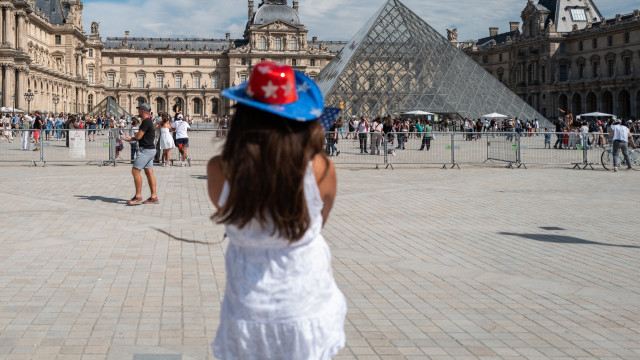



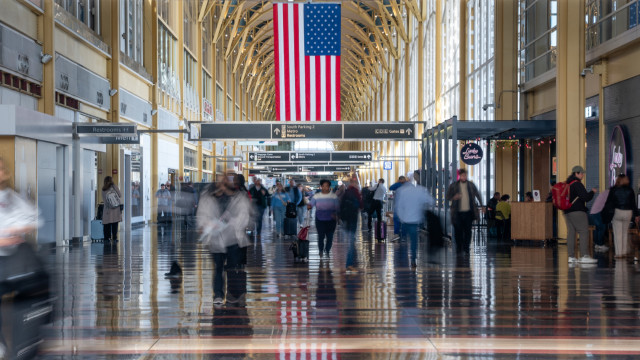
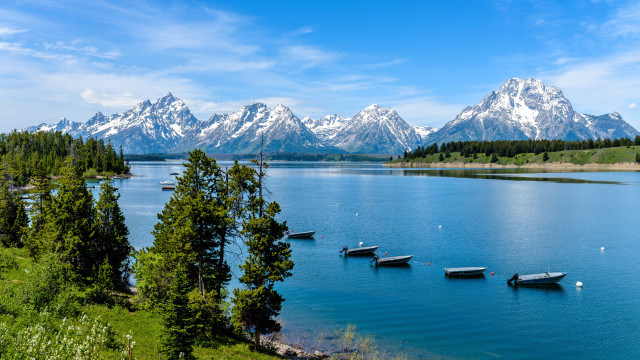




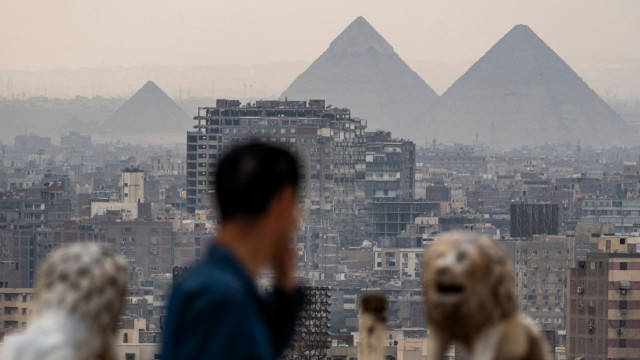

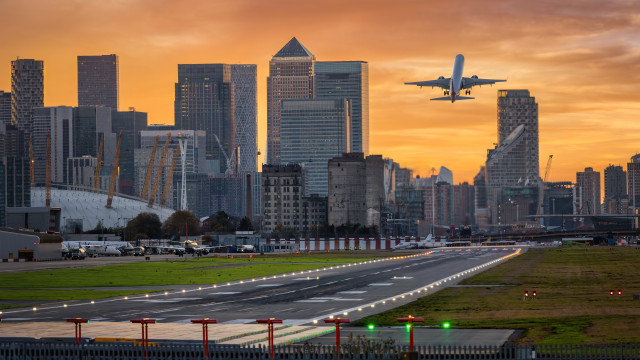
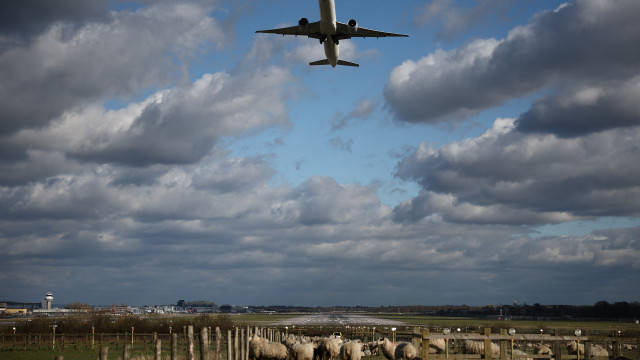




MOST READ
- Last Hour
- Last Day
- Last Week








